Anti-drifting measures
Road and ditch design
Correctly designed ditches can catch snow before it blows across roadways. General rules for designing drift-free roads include:
- Minimum distance from the edge of pavement to the toe of the backslope should be 46 feet
- Ditches should be at least 4 feet deep
- Distance from the edge of pavement to the top of the backslope should be based on the equation:

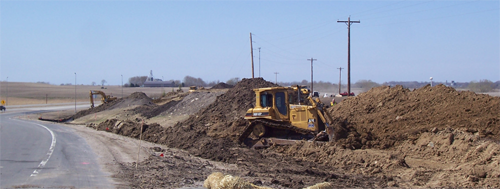
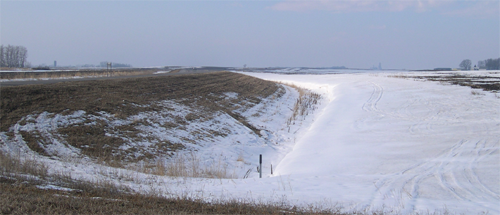
Structural snow fence design
Structural snow fencing is best suited for sites that are not conducive for tree and shrub plantings. The following factors may preclude the use of living snow fences:
- Herbicide concerns
- Unavoidable tile lines
- Soil pH above 8.0
- Soil salinity and/or salt spray
- Soil types that are too compacted, wet, dry, and or rocky to permit normal root development
- Presence of deer wintering area that raises the threat that a living snow fence will be browsed to the point that the fences does not reach the required height.
Structural snow fencing uses a synthetic rail and wood or steel posts to create the fence. A polyethylene material with bonded cables inside to create the synthetic rail. Posts are spaced according to the height of the fences, but are typically 10-15 feet apart. No additional clearance is needed on the sides of the fence. Due to the material costs, labor associated with constructing this type of snow fence, and that they are left standing year-round, MnDOT typically acquires an easement or enters into an agreement with the landowner.
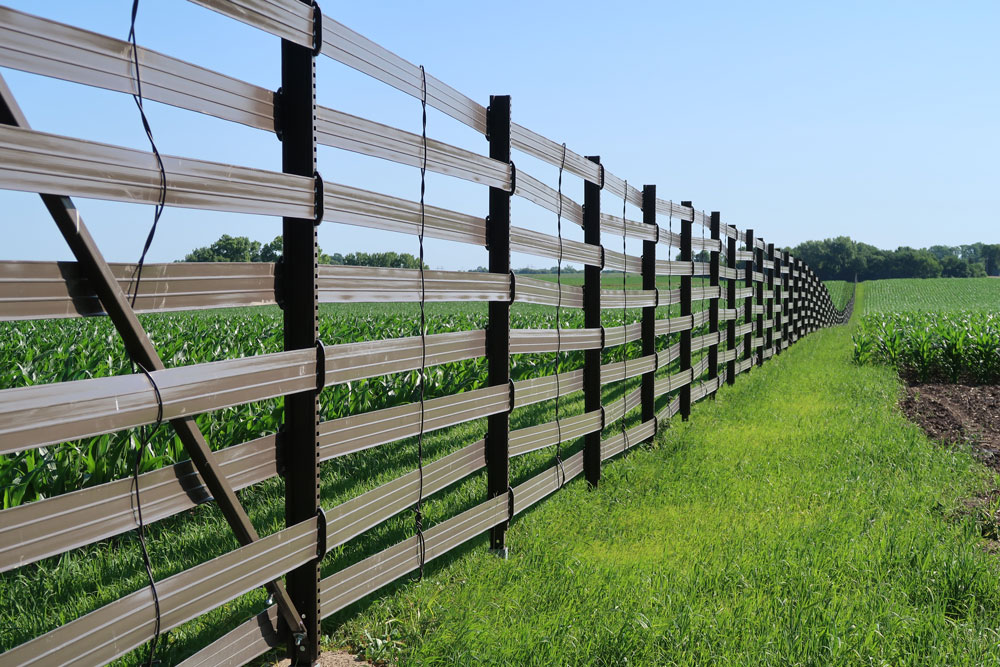
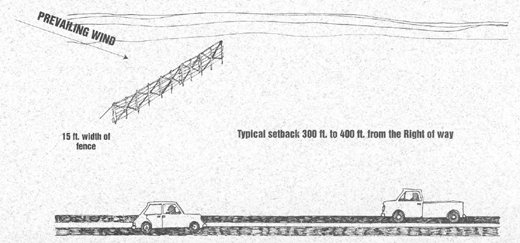
Living snow fence design
Plantings of trees, shrubs and native grasses located along roads or around communities and farmsteads. Properly designed and placed, these living barriers trap snow as it blows across fields, piling it up before it reaches a road, waterway, farmstead or community.
Twin shrub row
Shrubs are smaller than trees and can tolerate the drier conditions of western Minnesota and they also do not displace grassland nesting birds. Shrubs can trap lots of snow. Depending on soil types, drainage, and climate conditions, wetter fields in the spring may be expected. Certain crops such as alfalfa and fall planted small grains may actually benefit from the snow's ability to insulate and protect these crops through the winter. In most locations this design will enhance wildlife habitat. Twin shrub rows are typically planted using a geotextile fabric and pea rock as a weed barrier. Wood mulch has not proven to be as effective as the fabric/rock method.
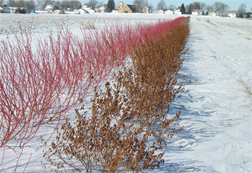
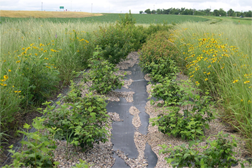
Twin shrub row planted in the northwest quadrant of US 169 and MN19 using geotextile fabric and pea rock as weed control.
Community shelterbelt
The community shelterbelt design decreases the wind speed and causes the blowing snow to accumulate in front of and within the shelterbelt in a manner that prevents huge snow drifts from inundating homes, businesses, and roads.

Deciduous tree windbreak
A deciduous tree windbreak uniformly distributes the snow across the field to replace soil moisture without delaying spring time planting. It also helps to control top soil wind erosion.
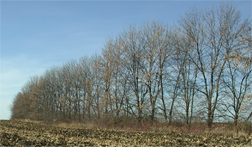
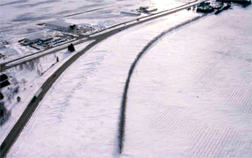
Deciduous tree windbreak planted near Springfield, MN protecting US Hwy 14.
Grassland nesting bird component
To enhance grassland nesting bird habitat, seed native grasses within the downwind snow storage area and beyond. The grass component should be a minimum width of 150 feet. If the strip is too narrow (less than 100 feet), rousting birds may be buried by the snow.
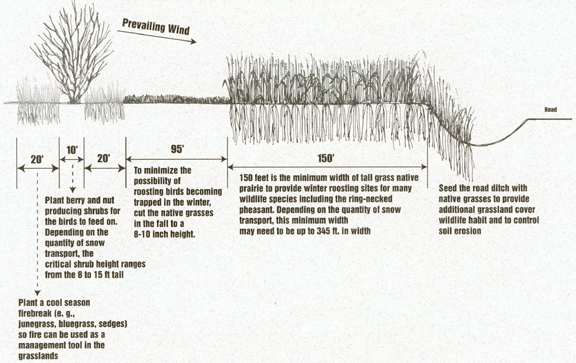
Standing corn rows
MnDOT annually purchases standing corn rows from area farmers to serve as snow fences adjacent to sections of highways that have a history of blowing and drifting snow. Corn needs to be planted parallel to the road to serve as a fence. A typical stand corn row snow fence is one-quarter-mile long and 16 rows wide covering an average of 1.2 acres. The fence is set back 120 to 240 feet from the highway right-of-way.
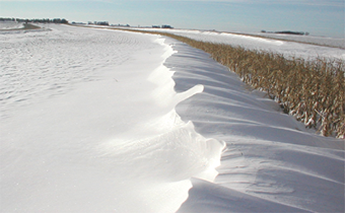
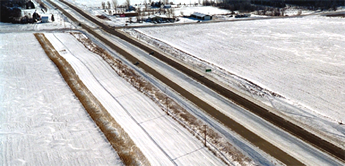
Standing corn rows.

